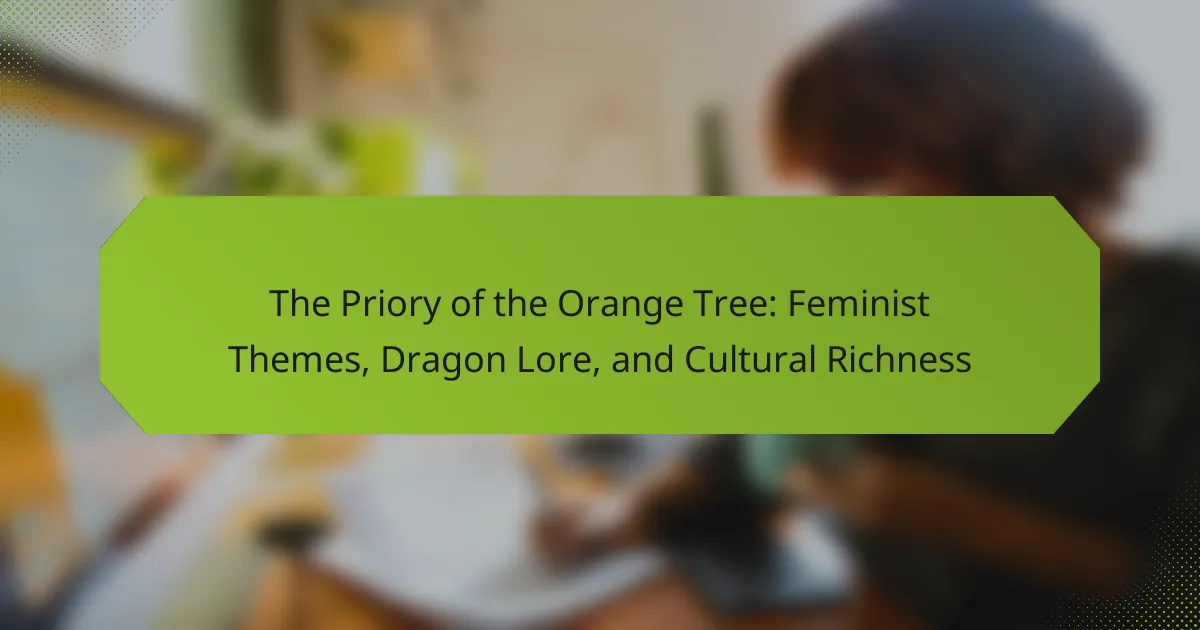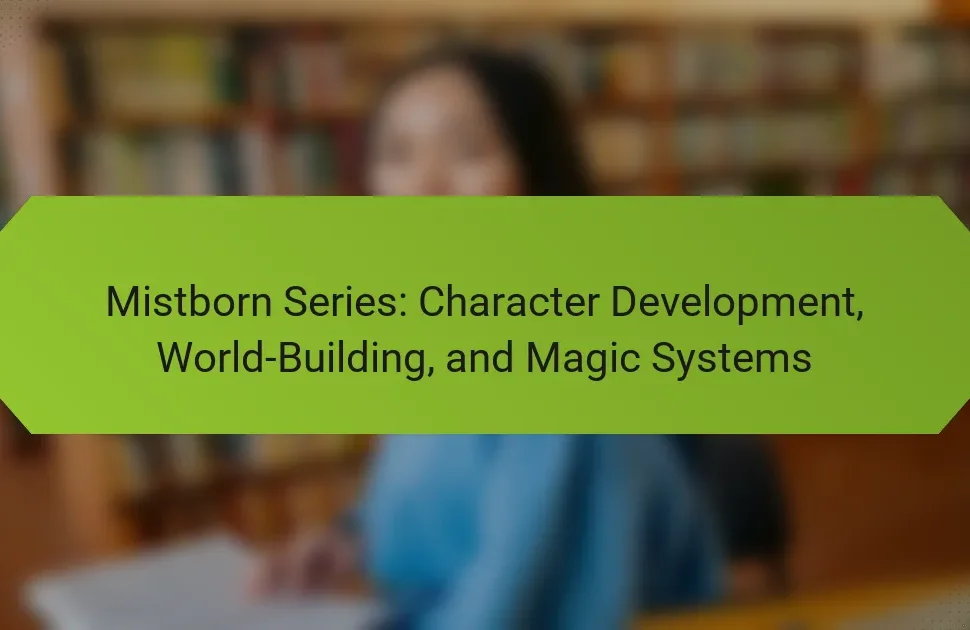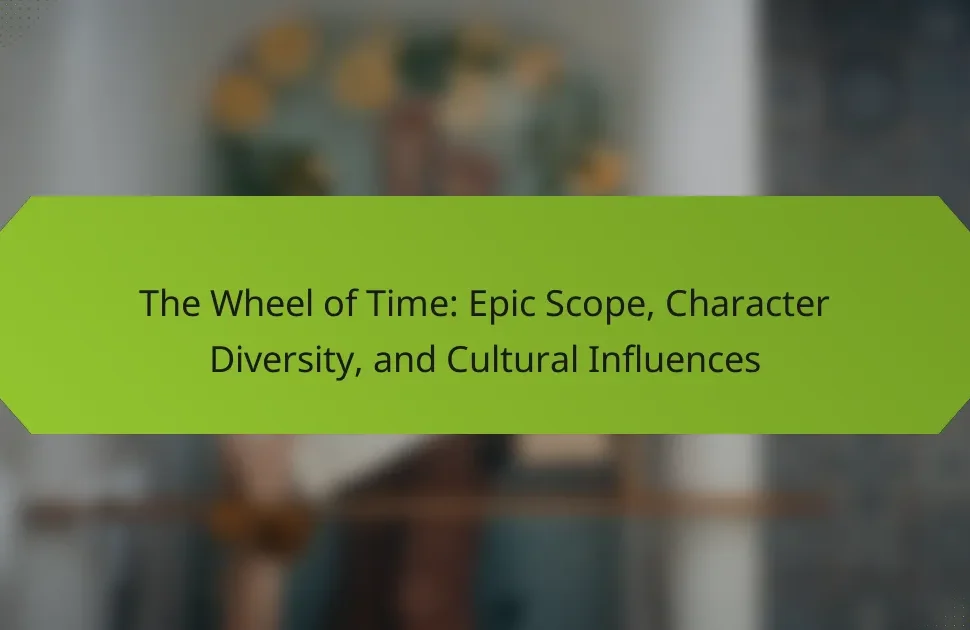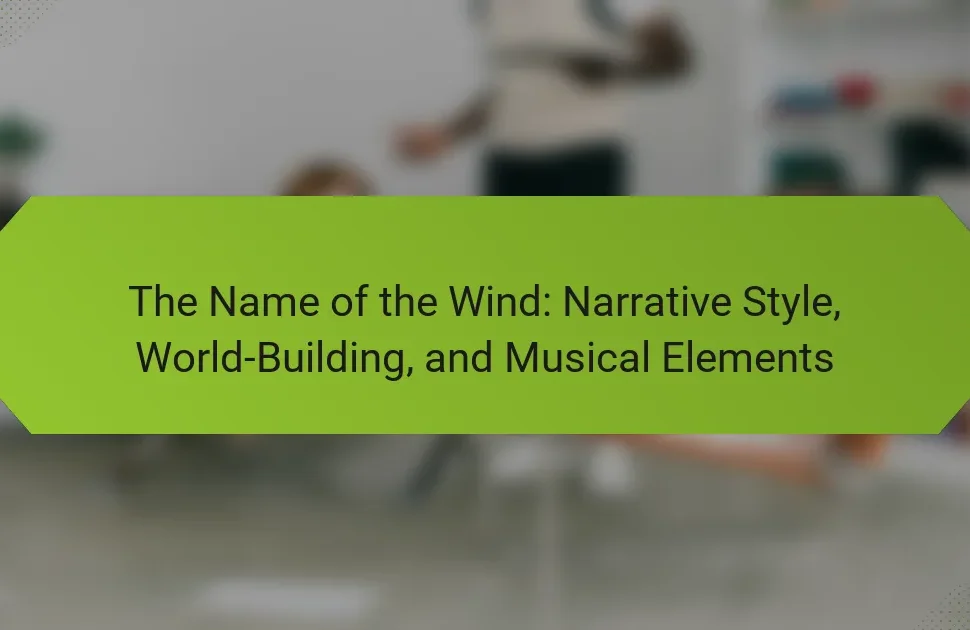The Priory of the Orange Tree offers a unique exploration of feminist themes, showcasing strong female characters and gender equality. It intertwines dragon lore that symbolizes power and freedom, enhancing the narrative’s complexity. Additionally, the story reflects cultural richness through diverse influences and intricate world-building, challenging traditional gender roles and societal structures.
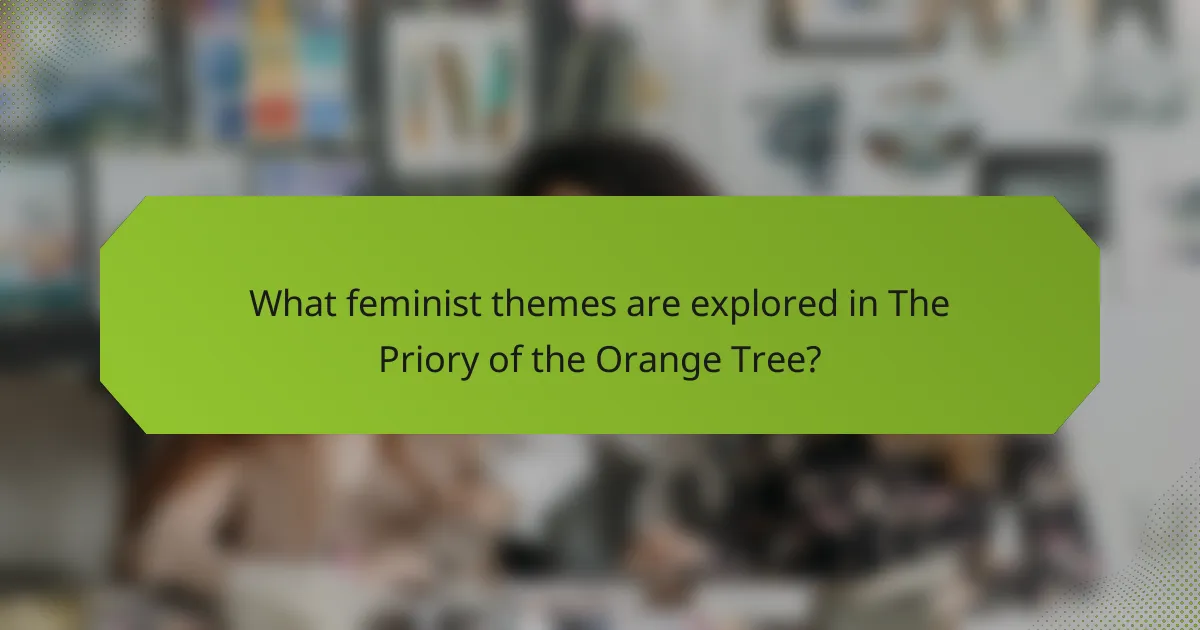
What feminist themes are explored in The Priory of the Orange Tree?
The Priory of the Orange Tree explores feminist themes through strong female characters, gender equality, and the subversion of traditional roles. The narrative emphasizes women’s empowerment, showcasing their leadership and resilience in a patriarchal society. Key characters challenge norms, illustrating diverse experiences and perspectives. The story also critiques systemic oppression, advocating for unity among women across cultures. Additionally, the presence of powerful matriarchal figures reinforces the importance of female agency in shaping the world.
How do female characters shape the narrative?
Female characters in “The Priory of the Orange Tree” significantly shape the narrative by driving themes of empowerment and agency. Their multifaceted roles challenge traditional gender norms and illustrate diverse perspectives within the fantasy genre. For instance, Ead Duryan’s journey from a protector to a leader exemplifies personal growth and defiance against patriarchal structures. Additionally, characters like Sabran and Niclays showcase the complexities of leadership and sacrifice, enriching the story’s cultural depth. This emphasis on strong female figures not only enhances the plot but also resonates with feminist themes, making the narrative more relatable and impactful.
What role does female empowerment play in the story?
Female empowerment is central to the narrative of “The Priory of the Orange Tree.” The story presents strong female characters who challenge traditional gender roles, showcasing leadership, resilience, and agency. Their journeys highlight the importance of solidarity and the fight against patriarchal structures. For instance, the character Ead Duryan embodies these themes as she navigates her responsibilities and fights for her beliefs. This emphasis on female empowerment not only enriches the plot but also reinforces feminist ideals within a richly developed fantasy world.
Which historical influences inform the feminist perspectives?
Historical influences on feminist perspectives in “The Priory of the Orange Tree” include various literary and cultural traditions. The novel draws from feminist movements that emphasize empowerment and agency, reflecting historical struggles for women’s rights.
Key influences are the suffrage movement, which fought for women’s voting rights, and the feminist literary canon, which critiques gender roles. Additionally, the incorporation of dragon lore symbolizes female strength and independence, challenging traditional patriarchal narratives.
The narrative’s rich cultural tapestry highlights diverse feminist viewpoints, merging fantasy with real-world issues. This approach allows for a nuanced exploration of gender dynamics, making the themes relevant and impactful.
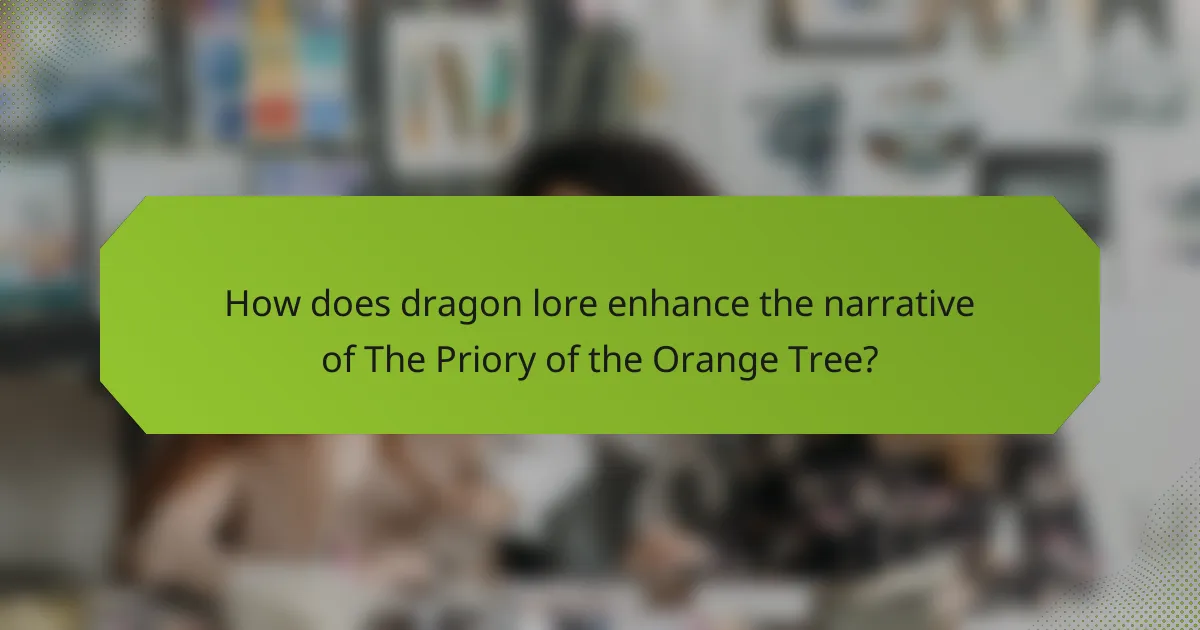
How does dragon lore enhance the narrative of The Priory of the Orange Tree?
Dragon lore enhances the narrative of The Priory of the Orange Tree by symbolizing power and freedom. The dragons serve as metaphors for the struggles faced by the characters, particularly women, in a patriarchal society. Their presence challenges traditional gender roles and highlights themes of empowerment and resilience. Additionally, the unique characteristics of the dragons, such as their intelligence and loyalty, reflect the diverse cultural richness of the story’s world. This interplay between dragon lore and feminist themes deepens the reader’s engagement and enriches the overall narrative experience.
What types of dragons are featured and what do they symbolize?
“The Priory of the Orange Tree” features various types of dragons, each symbolizing different themes. The most notable include the benevolent dragons, representing wisdom and protection, and the monstrous dragons, symbolizing chaos and destruction. The contrast between these types highlights the struggle between good and evil, reflecting feminist themes of empowerment and resilience. Additionally, the dragons embody cultural richness, drawing from diverse mythologies and beliefs, reinforcing the narrative’s depth and complexity.
How does the relationship between dragons and humans evolve throughout the story?
The relationship between dragons and humans evolves significantly throughout the story. Initially, dragons are viewed as dangerous beasts, embodying fear and conflict. As the narrative progresses, characters develop deeper connections with dragons, recognizing their intelligence and emotional capacity. This shift highlights themes of understanding and coexistence. By the conclusion, dragons and humans share a bond rooted in mutual respect and collaboration, symbolizing broader feminist themes of empowerment and unity against oppression.
What cultural significance do dragons hold in the context of the narrative?
Dragons in “The Priory of the Orange Tree” symbolize power, femininity, and resilience. They represent the struggle against oppression and the importance of unity in overcoming challenges. Throughout the narrative, dragons embody the complexities of female strength and agency, serving as protectors and allies to the protagonists. This duality highlights the cultural significance of dragons as both fearsome creatures and symbols of empowerment, reflecting broader feminist themes within the story.
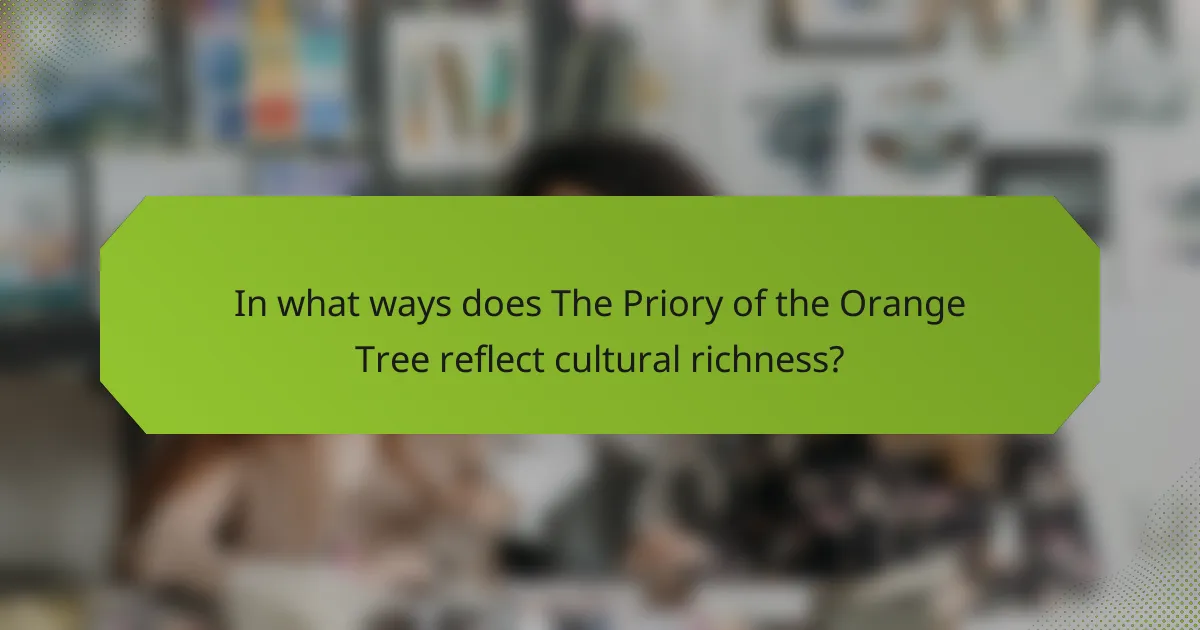
In what ways does The Priory of the Orange Tree reflect cultural richness?
The Priory of the Orange Tree reflects cultural richness through its intricate world-building, diverse characters, and exploration of feminist themes. The narrative intertwines dragon lore with societal structures, showcasing the clash between tradition and progress. This dynamic fosters a rich tapestry of cultures, beliefs, and values, inviting readers to engage with complex issues such as gender roles and power dynamics. The story’s depth is enhanced by its unique representation of female strength and leadership, setting it apart in the fantasy genre.
Which cultural elements are woven into the world-building?
Cultural elements in “The Priory of the Orange Tree” include diverse traditions, gender roles, and mythologies. The narrative intertwines feminist themes with rich dragon lore, reflecting various cultural practices and beliefs. These elements create a multifaceted world that challenges stereotypes and promotes inclusivity. The unique portrayal of female characters and their empowerment showcases a progressive cultural landscape. Additionally, the integration of different cultural mythologies enhances the depth of the world-building, making it richly immersive.
How do different cultures interact within the story?
Different cultures interact in “The Priory of the Orange Tree” through complex relationships, showcasing diverse beliefs and practices. The narrative highlights the interplay between Eastern and Western traditions, emphasizing mutual respect and conflict. Characters from various backgrounds collaborate and confront their differences, enriching the story’s cultural tapestry. This interaction illustrates the unique attributes of each culture, such as their approaches to gender roles and dragon lore, fostering a deeper understanding among them. As a result, the novel presents a rich exploration of cultural dynamics, reflecting feminist themes and the importance of unity in diversity.
What unique traditions or beliefs are represented?
The Priory of the Orange Tree showcases unique traditions and beliefs through its matriarchal society, dragon lore, and feminist themes. The narrative emphasizes the strength of female characters, challenging traditional gender roles. This world-building incorporates diverse cultural influences, reflecting a rich tapestry of values around unity, power, and respect for nature. The unique belief in dragons as protectors further enhances the story’s depth, symbolizing both fear and reverence. These elements create a compelling backdrop that resonates with contemporary discussions on gender and identity.
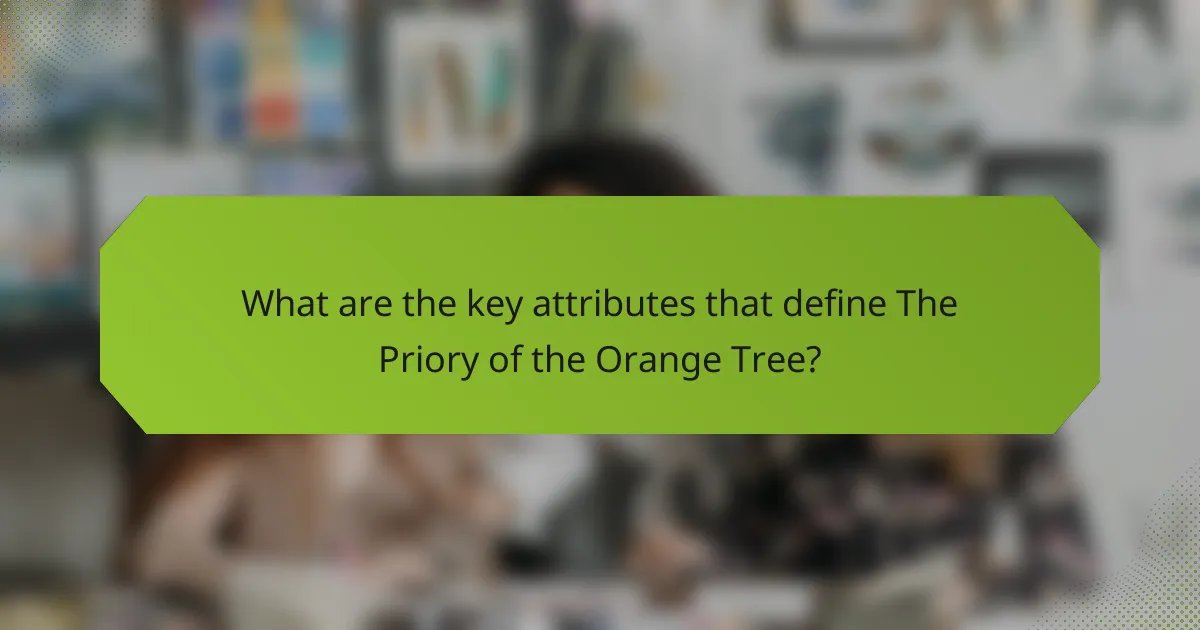
What are the key attributes that define The Priory of the Orange Tree?
The Priory of the Orange Tree is defined by its feminist themes, rich dragon lore, and cultural depth. Feminist themes explore gender roles and empowerment, challenging traditional narratives. Dragon lore adds a fantastical element, symbolizing power and conflict. Cultural richness encompasses diverse influences and settings, enhancing the narrative’s complexity.
How does the setting contribute to the overall atmosphere?
The setting of “The Priory of the Orange Tree” significantly enhances the atmosphere by immersing readers in a richly detailed world. The diverse landscapes, from lush forests to arid deserts, create a vivid backdrop for the unfolding feminist themes and dragon lore. This cultural richness contributes to a sense of authenticity and depth, allowing readers to connect emotionally with the characters and their struggles. The intricate world-building emphasizes the unique attributes of the narrative, making the setting a vital component of the overall experience.
What narrative techniques are employed to engage the reader?
“The Priory of the Orange Tree” employs various narrative techniques to engage readers. These include intricate world-building, character depth, and multiple perspectives. The integration of feminist themes enhances emotional resonance, while dragon lore adds excitement and intrigue. Cultural richness is conveyed through detailed settings and diverse character backgrounds, creating a vivid reading experience.
Which themes resonate with contemporary societal issues?
The Priory of the Orange Tree resonates with contemporary societal issues through its exploration of feminist themes, dragon lore, and cultural richness. These elements highlight the fight for gender equality, the importance of diverse narratives, and the challenge of traditional power structures.
Feminist themes are prominent, showcasing strong female characters and their journeys against patriarchal oppression. This mirrors current movements advocating for women’s rights and representation.
Dragon lore serves as a metaphor for power dynamics and the complexities of fear and respect in leadership. This reflects ongoing discussions about authority and the nature of conflict in society.
Cultural richness is evident in the diverse world-building, which encourages readers to appreciate different perspectives and histories. This aligns with the contemporary push for inclusivity and understanding of various cultures.

How does The Priory of the Orange Tree compare to other fantasy novels?
The Priory of the Orange Tree stands out among fantasy novels due to its strong feminist themes, intricate dragon lore, and rich cultural tapestry. Unlike many traditional fantasies, it centers on female protagonists, challenging gender norms and promoting empowerment. The dragon lore is unique, depicting dragons as complex beings with their own societies, contrasting with the often simplistic portrayals in other works. Additionally, the novel’s cultural richness, drawing from diverse influences, enhances its world-building and depth. This combination of attributes positions it distinctly within the fantasy genre, appealing to readers seeking more inclusive narratives.
What sets it apart from traditional fantasy tropes?
The Priory of the Orange Tree stands apart from traditional fantasy tropes by centering feminist themes and diverse cultural perspectives. Unlike typical narratives dominated by male heroes, this story features strong female protagonists and explores their journeys in a richly developed world. The dragon lore is reimagined, portraying dragons as complex beings rather than mere antagonists, which adds depth to the narrative. Additionally, the cultural richness reflects a tapestry of influences, promoting inclusivity and challenging conventional fantasy stereotypes. This unique approach fosters a more relatable and progressive storytelling experience.
Which elements are similar to classic works in the genre?
“The Priory of the Orange Tree” shares elements with classic works through its intricate world-building, strong female characters, and exploration of power dynamics. Similar to “The Lord of the Rings,” it features a richly developed fantasy realm. Like “A Song of Ice and Fire,” it presents complex political intrigue and moral ambiguity. Additionally, the emphasis on dragons parallels the mythos in “Eragon,” while feminist themes resonate with works such as “The Handmaid’s Tale.” These connections enhance its cultural richness and thematic depth.
How has the reception of the book varied across different cultures?
The reception of “The Priory of the Orange Tree” varies widely across cultures, reflecting diverse feminist interpretations and dragon lore appreciation. In Western cultures, readers often celebrate its feminist themes and representation of diverse identities. In contrast, some Eastern cultures may focus more on the rich dragon lore and the traditional elements of fantasy. Cultural nuances shape how themes resonate, leading to varied critiques and praises. For instance, readers in regions with strong matriarchal traditions may connect deeply with the protagonist’s journey, while others might emphasize the book’s world-building. Overall, cultural context significantly influences the reception and interpretation of the book’s themes.
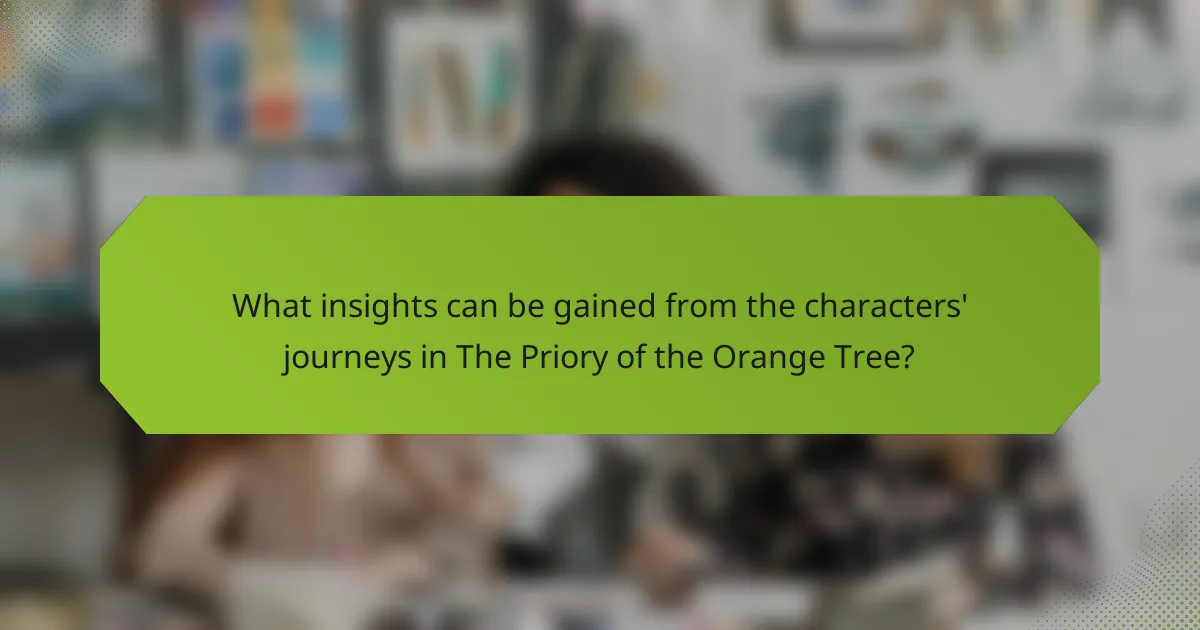
What insights can be gained from the characters’ journeys in The Priory of the Orange Tree?
The characters’ journeys in The Priory of the Orange Tree reveal profound insights into themes of feminism, identity, and cultural conflict. Each character embodies unique attributes that challenge traditional gender roles and societal expectations. For example, Ead, a female warrior, defies norms by taking on a protector role, showcasing strength and resilience. Similarly, Saffron’s quest for self-discovery highlights the importance of personal agency in a patriarchal society. These journeys emphasize the significance of solidarity among women and the transformative power of love and friendship. As a result, the narrative illustrates how individual growth contributes to broader societal change, enriching the story’s cultural tapestry.
Which character arcs are most compelling?
The most compelling character arcs in “The Priory of the Orange Tree” include those of Ead Duryan and Sabran IX. Ead’s transformation from a secretive, duty-bound protector to a confident leader showcases her growth and resilience. Sabran’s journey from a sheltered queen to a decisive ruler reflects her struggle against societal expectations. Both arcs intertwine with feminist themes and cultural richness, enhancing their complexity and relatability.
How do personal struggles reflect broader societal themes?
Personal struggles in “The Priory of the Orange Tree” reflect broader societal themes of feminism and cultural diversity. The narrative showcases characters navigating gender roles and power dynamics, highlighting the fight for autonomy. Additionally, the dragon lore symbolizes societal fears and the quest for identity. These elements intertwine personal experiences with collective issues, illustrating how individual challenges mirror larger cultural narratives.
What lessons can readers take away from the characters’ experiences?
Readers can learn about resilience, empowerment, and the importance of diverse perspectives from the characters’ experiences in “The Priory of the Orange Tree.” The narrative showcases strong female characters who navigate complex challenges, emphasizing the value of collaboration and understanding across cultures. Themes of loyalty and sacrifice highlight the significance of personal choices and their broader impact on society. Additionally, the rich dragon lore serves as a metaphor for confronting fears and embracing one’s identity, reinforcing the importance of self-acceptance and courage.
What are the best practices for engaging with the themes of The Priory of the Orange Tree?
To engage effectively with the themes of The Priory of the Orange Tree, focus on its feminist narratives, dragon mythology, and cultural depth. Analyze character development that challenges traditional gender roles. Explore the significance of dragons as symbols of power and freedom. Examine the rich cultural tapestry, including diverse influences and settings. Encourage discussions that highlight intersectionality and representation in the story.
